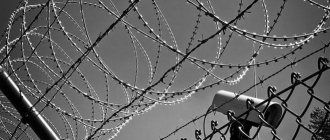What items are recognized as material evidence under the Code of Criminal Procedure of the Russian Federation?
Part 1 of Article 81 of the Code of Criminal Procedure of the Russian Federation specifies items considered to be material evidence. These are the following objects:
- Those that are the means by which an unlawful act was committed or that preserve traces (for example, a knife, a weapon, items of clothing with blood, etc.).
- In relation to which illegal actions are directed (jewelry, securities, cash, and so on).
- Capable of being a means for detecting an illegal act or establishing relevant circumstances (for example, which the criminal left at the scene of the crime).
Reasons for sending objects for study
To perform a forensic medical examination, the following are provided:
- A court ruling (resolution of the investigative body) on the need to study objects. The paper lists the circumstances and issues that must be resolved by specialists. At the same time, objects for study are sent.
- List of materials sent as samples. For example, these could be fragments of blood, hair, etc.
- A copy of the protocol for the inspection of objects or the crime scene and the seizure of samples.
- Conclusion of the initial study (if it is repeated).
If any materials are missing, the expert must request them. This mainly concerns samples for comparative analysis. Without them, the examination cannot be carried out. The date of commencement of the study of objects is considered to be the day of receipt of the last of the requested samples (materials). The material evidence and accompanying documents are transferred to the head of the forensic biological department to the performing specialist.
Classification of evidence
Physical evidence is kept and used in court proceedings in a special manner. They can be divided into two types:
- Those to which the corresponding act is directed, for example, manufactured (counterfeit money) or damaged.
- Cash, material assets and other property that the offender received after committing the offense. The wording was introduced after the adoption of the Code of Criminal Procedure of the Russian Federation. Then it was changed, which made the situation even more confusing. Initially, the clause was as follows: “property, monetary and other valuables that were obtained after the commission of a crime or acquired by criminal means.” Then this phrase was removed and this gave rise to problems. It has become unclear what type of individually defined things belong to: those to which the offense was directed or property obtained after an unlawful act.
Other objects and documents that can be used to clarify the circumstances of the case can also act as physical evidence. Thus, the list of types of material evidence continues to remain open. The last type listed may include any items that have become evidence to one degree or another. Moreover, the dimensions of the object cannot serve as a criterion on the basis of which the types of material evidence would be differentiated. The division is carried out based on the meaning for the unlawful act and derived properties.
Evidence can be qualified on other grounds, for example, depending on the relationship to criminal acts, legal significance, types of examination assigned, and so on.
According to their legal meaning, material evidence can be incriminating (directly indicating the commission of a crime), helping to establish a crime, or aggravating or exculpatory.
If we consider physical evidence in relation to the subject being proven, then they can be divided into direct and indirect. Direct evidence includes those that directly indicate a specific criminal act. The rest are indirect. Moreover, most are indirect.
Also, material evidence differs in the types of examinations that are carried out in relation to them. At the same time, certain evidence may be subject to different studies.
Depending on the stages of criminal acts, physical evidence may relate to factors that occurred before the commission of the offense, accompanied it or followed it.
According to the method of obtaining, material evidence can be obtained as a result of professional activities carried out by representatives of the Department of Internal Affairs or during the conduct of legal proceedings in a case, for example, testimony of witnesses in court.
Requirements
The destruction of material evidence - narcotic and psychotropic drugs - is regulated by Articles 28, 29 of the Federal Law of January 8, 1998, and by Government Decree of June 18, 1999. These documents establish appropriate rules for confiscated substances, equipment or tools, the further use of which is considered inappropriate. In accordance with general requirements, physical evidence must be contained in packaging that ensures the impossibility of substitution and prevents it from losing its properties. The placement of the object in special conditions is provided until the court verdict enters into legal force or until the expiration of the period for appealing the ruling or order to terminate the proceedings. The object must be transferred along with the case. This rule applies to cases where the content is not accompanied by difficulties and does not pose a danger to others.
Procedural conditions for the admissibility of objects as material evidence
Not any of the items described above may be material evidence. For their recognition, a special procedure is carried out, consisting of the following stages:
- Seizures. It can be carried out exclusively from objects that can help the investigation. If it turns out that the relevant items are not related to the offense, they are returned. The process can be recorded on photo or video materials. If the item is dangerous, it may be destroyed, which must be indicated in the accompanying document.
- Inspection. Its implementation can also be recorded using a camera or video camera. The procedure is carried out at the place of seizure, during investigative actions or in court. In this case, the arrested person may be interrogated to clarify some points. In addition to the suspect, witnesses are sometimes interviewed.
- Getting involved. This procedure is provided for in Part 2 of Article 81 of the Code of Criminal Procedure of the Russian Federation. The procedure is carried out only after examining the material evidence and recognizing it as relevant, that is, having information in relation to the criminal case. Before inclusion, the evidence is examined and described in detail.
Each action generates its own document. This is a certificate revealing the origin of the evidence, the protocol of its inspection and the investigator’s decision to recognize the item as evidence, along with its inclusion in the case.
The subject may be attached to the case by the court, for which a court order is issued. The evidence may be a report on the progress of the seizure of an item, a personal search, or inspection protocols. The protocols display the main features of the item by which it can be identified.
Properties
What are we going to talk about here? Physical evidence (objects, documents and other objects) have certain characteristics that are important for the investigation and establishment of the circumstances of the crime. These include, for example, physical properties (the configuration and size of the trace), location (a stolen object found on the accused) or the fact of manufacture, creation or alteration (fake document). Thus, the evidence is not the object itself, but its characteristics.
What cannot be included in a criminal case
Even an item legally included may be canceled in the future as such due to the fact that it does not relate to the merits of the case. Any evidence can be considered as such only conditionally, since in fact it will become evidence after the court verdict.
There are also material objects that play the same role as material evidence, but they are not included in the case due to ethical standards (for example, corpses) or the impossibility of inclusion due to physical factors (stationary objects that cannot be moved). For example, a pole that a car crashed into is as important in evidence as a safe after money was stolen from it. But the pillar cannot be attached to the case.
Therefore, the issue is resolved this way: if the item can be physically attached, it is expedient and convenient, then it is attached to the criminal case as material evidence. For example, it is quite possible to remove several boards from a fence.
In the same way, the question is resolved in relation to objects that are not visible to the naked eye. If necessary, they are removed with the object by the carrier, and subsequently the corresponding fixation and examination is carried out by an expert.
Theoretical background
In accordance with the fact that in theory the concept of “material evidence” is associated with material objects, Kozlov formulated theses of a methodological nature. They reveal the essence of the term to a certain extent. In particular, Kozlov says that:
- Physical evidence is the information that the subject of procedural cognition receives. It is expressed in natural code. In other words, it is a means of proof that acts in the process not as a thing or object, but as a message. This information allows the cognizer to gain knowledge about the circumstances that act as the object of study.
- Physical evidence and its source reflect different objective realities.
Storage of material evidence
According to the norms of the Code of Criminal Procedure of the Russian Federation, physical evidence must be stored until the verdict comes into force.
The retention period ends with the closure of the case or after the end of the period established for filing a complaint with a higher authority. Evidence that is of high value, is too large or for other reasons, as a result of which it cannot be included in the case, must be photographed or filmed.
The case materials contain information about where they are located. If this does not harm the evidence, then they can be returned to the owner.
If material evidence poses a danger to human health or life, then it is not stored. These items are destroyed after taking photographs and video recordings, as well as reflecting the necessary information in the protocol. A sample of the appropriate remedy may also be attached to the file.
Money and material assets obtained by criminal means are seized until the completion of the trial and the entry into force of the verdict.
Design: general information
The form that physical evidence has in criminal proceedings is manifested through the existence of all properties that are relevant to the case. It must reflect a complex of these characteristics and be accessible to subjects of procedural activity. As a result, the objects or things themselves that acted as direct objects of illegal actions cannot be a form of material evidence. They act only as an uncoded inanimate source of surviving traces of an offense. Their transformation into a procedural form, which is capable of carrying and expressing specific information relevant to the investigation, is carried out through the consolidation and description of existing evidentiary characteristics and properties in the manner prescribed by law.
Stages of studying objects
First of all, the perpetrator needs to investigate the circumstances of the crime and the questions posed to him. The specialist also clarifies what materials were sent for study, what traces were found, etc. Next, he needs to inspect the parcel for its integrity. This is carried out in the presence of witnesses. If there is damage to the packaging, a corresponding report is drawn up and the investigative authorities are notified. Next, the parcel is opened. The expert compares the availability of materials with the list in the ruling or resolution. If there are no discrepancies, the specialist can begin analysis. If they exist, a corresponding act is drawn up. He signs in two copies. One is sent to the investigative agency, the other remains in the laboratory. After this, the specialist begins to study the materials and resolve the questions given to him. Thus, the following sequence of expert actions can be determined:
- Studying documents.
- Conducting inspection and description of packaging.
- Visual assessment of received materials (samples).
- Identification of objects of biological nature.
- Formulating a research plan taking into account existing methods and according to identified objects.
- Determination of gender, species, group affiliation of materials (samples) to resolve questions raised by the investigator or the court.
- Drawing conclusions.
- Formulating an expert opinion.







